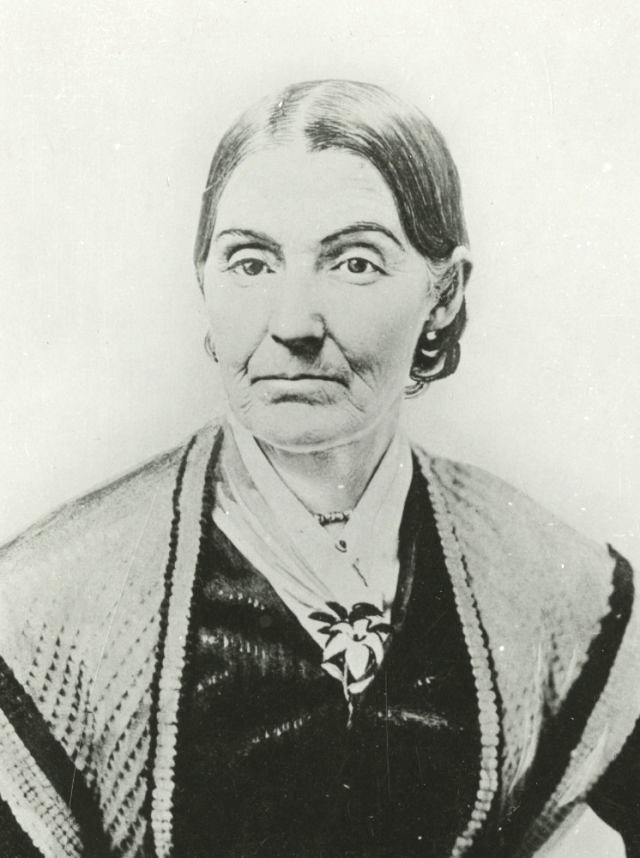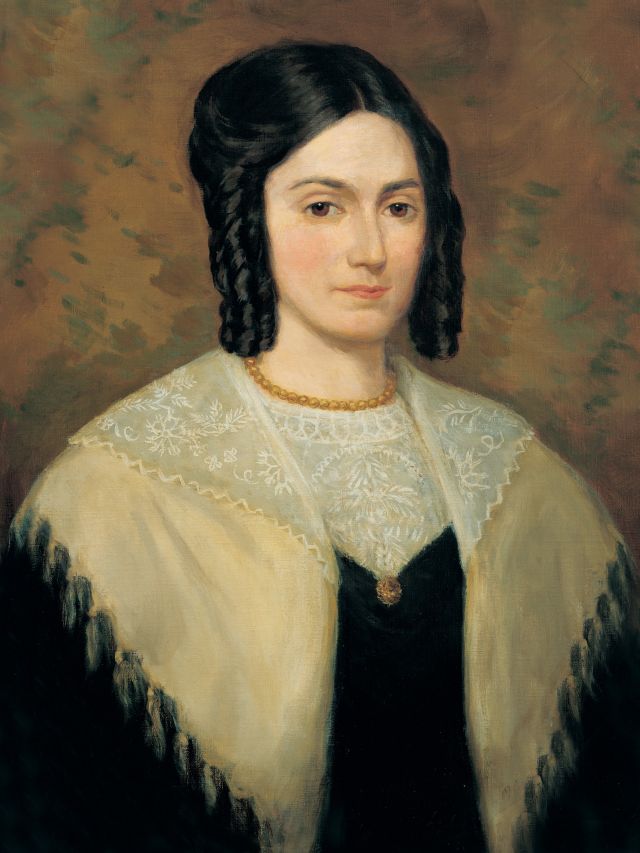Emma Hale Smith
(1804-1879)






By Susan Easton Black
To the Prophet Joseph Smith, his wife Emma was, “My beloved Emma—she that was my wife, even the wife of my youth, and the choice of my heart . . . undaunted, firm, and unwavering—unchangeable, affectionate Emma!”1 Joseph’s letters to her speak of love: “I would gladly go from here to you barefoot and bareheaded, and half naked, to see you and think it great pleasure.”2
To Latter-day Saints around the world, Emma is the most famous woman in the Church. She was the first to know that Joseph received the gold plates from the angel Moroni. She was the only woman to serve as a scribe for the Book of Mormon translation. Of her role as scribe Emma said,
My belief is that the Book of Mormon is of divine authenticity—I have not the slightest doubt of it. I am satisfied that no man could have dictated the writing of the manuscript unless he was inspired; for, when acting as his scribe [he] would dictate to me hour after hour; and when returning after meals, or after interruptions, he could at once begin where he had left off, without either seeing the manuscript or having any portion of it read to him. This was an unusual thing for him to do. It would have been improbable that a learned man could do this; and, for one so ignorant and unlearned as he was[,] it was simply impossible.3
Her testimony of the Book of Mormon and knowledge of the prophetic calling of Joseph led to her baptism on June 28, 1830 by Oliver Cowdery. A month after entering baptismal waters, the Prophet Joseph received a revelation for Emma in which she was told, “Behold, thy sins are forgiven thee, and thou art an elect lady, whom I have called” (D&C 25:3).
Emma became the mother of eleven children, raising five to adulthood. With two babies in her arms and two children at her skirts, she walked across the frozen Mississippi River to safety in Quincy, Illinois, carrying Joseph Smith’s papers, which included the new translation of the Bible. “No one but God, knows the reflections of my mind and the feelings of my heart when I left our house and home, and almost all of everything that we possessed [in Missouri] except our little children,” wrote Emma to Joseph, a prisoner in Liberty Jail.4
Emma welcomed the poor and the acclaimed into her home, compiled two hymnbooks, and became president of the Female Relief Society of Nauvoo. Under her able guidance, women of Nauvoo ministered to the needs of the poor. Through their charitable efforts, heavy burdens were lifted and necessities needed to sustain life were freely given.
Emma participated in temple ordinance work, acting as a proxy for her extended family members. She wrote letters in defense of the Prophet Joseph to the governor of Illinois, and traveled about fifty miles to Quincy, Illinois to meet with him. She cared for Lucy Mack Smith in her old age and maintained properties in Nauvoo significant to the life of Joseph Smith. She bore a continuing testimony, even in her seventy-fourth year, of Joseph’s prophetic calling: “I believe he was everything he professed to be.”5 Emma died in April 1879 in Nauvoo at age 74.
1. Reflections and Blessings, 16 and 23 August 1842, p. 164. Joseph Smith Papers.
2. Letter of Joseph Smith to Emma Smith, April 1839. Joseph Smith Papers.
3. “Last Testimony of Sister Emma,” Saints’ Herald 26, no. 19 (October 1, 1879), p. 290.
4. Letter of Emma Smith to Joseph Smith, March 7, 1839, p. 7. Joseph Smith Papers.
5. “Last Testimony of Sister Emma,” p. 290.
Additional Resources
- Biography of Emma Hale Smith (josephsmithpapers.org)
- KnoWhy #386 – How Did Emma Smith Help Bring Forth the Book of Mormon?
